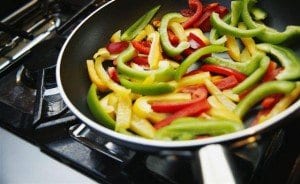Every year, when the holidays roll around, it seems that many diabetics simply miss out on some of the most delicious meals and treats of the year! It doesn’t have to be like that. Today, there are many ways for diabetics to enjoy eating during the holidays, especially desserts. Before anyone can fully understand how to make holiday desserts for diabetics, they need to understand what the disease is all about.
Dealing With Holiday Desserts For Diabetics: Every year, when the holidays roll around, it seems that many diabetics simply miss out on some of the most delicious meals and treats of the year! It doesn’t have to be like that. Today, there are many ways for diabetics to enjoy eating during the holidays, especially desserts. Before anyone can fully understand how to make holiday desserts for diabetics, they need to understand what the disease is all about.
Diabetes mellitus, more commonly referred simply as diabetes, is a metabolic disorder that is characterized by high levels of blood sugar, or glucose. These elevated levels occur when the body produces very little or no insulin but can also happen when the body doesn’t respond correctly to the insulin that is produced. Diabetes is usually an incurable disease and can result in blindness, amputation, kidney failure, heart disease, stroke, or even death when neglected or mismanaged.
Maintaining a healthy diet conducive to the diabetic condition is essential to treating the disease. Depending on what type of diabetes you have (Type I or II), you will need to manage your diet accordingly. With Type I diabetes, you will need to understand just how different foods will affect your blood sugar levels. With Type II, you will need to cut calories, as it is often a result of overeating. Regardless of which type you have, you will always need to eat the proper balance of proteins, fats, and carbohydrates to maintain healthy and safe blood sugar levels.
Traditionally, many diabetics have struggled during the holiday season maintaining healthy blood sugar levels. It seems that once the holiday season rolls around there is a candy cane on every corner, batches of freshly baked cookies, and plenty of pumpkin pie! Inevitably, every holiday meal has a great big sweet finale, no matter which holiday you are celebrating. This can be quite a dilemma for diabetics.
With modern medical knowledge, we have learned that it is all about balance rather than cutting sugar and desserts out of a diet completely. So, if you want that piece of apple pie after the big turkey dinner, just remember to skip the mashed potatoes and stuffing at dinner. Remember, you can have dessert, just think about what you choose during the meal.
You can also modify many dessert recipes without making them taste like they are sugar- or fat-free. A simple way to do this is to cut the sugar by one-third (or even up to one-half) while increasing the amount of cinnamon, vanilla, or nutmeg so often found in holiday desserts. By boosting the sweet spices and cutting the sugar, you are improving the recipe for a diabetic diet.
Cutting the fat out of holiday desserts is also a good way to play it safe. Replace the fat (butter or shortening) with pureed fruit like applesauce or baby-food prunes in cakes, cookies, and chocolate brownies. When you add fruit, you also can easily reduce the sugar since the fruit is naturally sweet! And there are always sugar substitutes. Many on the market taste just like real sugar.
The guide to having a happy and healthy holiday season is to think ahead. Just because you are a diabetic does not mean that you cannot look forward to all the fun that this festive season has to offer. Advanced planning, daily exercise, and emphasizing healthy choices when it comes to each meal are key elements to being able to have your cake and eating it, too.
 Vegetable Choices” width=”300″ height=”184″ />Here is a list of healthy vegetable choices that I use when preparing meals:
Vegetable Choices” width=”300″ height=”184″ />Here is a list of healthy vegetable choices that I use when preparing meals: Every Day
Every Day